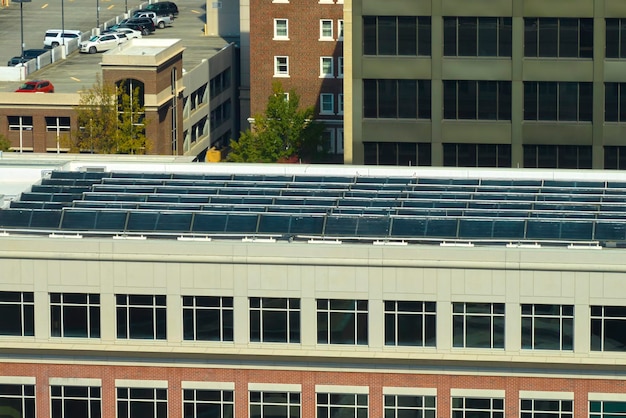Maximize Your Savings: Renewable Energy Tax Credits for 2024

Tax Credits for Renewable Energy: Investing in Solar and Wind Power in 2024 offer homeowners and businesses significant financial incentives for adopting clean energy technologies, reducing the overall cost and promoting sustainable practices.
Harness the power of the sun and wind while saving money, thanks to Tax Credits for Renewable Energy: Investing in Solar and Wind Power in 2024. Learn how these incentives can reduce your energy costs and contribute to a greener future.
Understanding Renewable Energy Tax Credits in 2024
Renewable energy tax credits are designed to encourage investment in clean energy technologies, such as solar and wind power. These credits can significantly reduce the upfront and long-term costs of adopting renewable energy systems.
In 2024, several tax credits are available for homeowners and businesses looking to invest in renewable energy. Understanding these credits is crucial for maximizing your savings and making informed decisions about your energy investments.
Residential Clean Energy Credit
The Residential Clean Energy Credit, also known as the Investment Tax Credit (ITC), is available for homeowners who install solar, wind, or other renewable energy systems. This credit can cover a significant portion of the installation costs.
Business Energy Investment Tax Credit
The Business Energy Investment Tax Credit (ITC) is designed for businesses that invest in renewable energy technologies. This credit can help businesses reduce their tax liability while promoting sustainable practices.
- Eligibility: Homeowners and businesses can be eligible for these credits by meeting specific criteria, such as installing qualified renewable energy systems.
- Savings: Tax credits can provide substantial savings, reducing the overall cost of installing and maintaining renewable energy systems.
- Requirements: There are specific requirements that must be met to qualify for these tax credits, including system performance and installation standards.

By understanding the different types of tax credits available and meeting the eligibility requirements, homeowners and businesses can take advantage of these incentives to invest in renewable energy and reduce their carbon footprint.
Solar Power Tax Credits for Homeowners
Solar power tax credits are among the most popular incentives for homeowners looking to switch to renewable energy. These credits can significantly reduce the cost of installing solar panels and other solar energy systems.
In 2024, homeowners can take advantage of the Residential Clean Energy Credit to offset the cost of their solar power investments. This credit offers a percentage of the installation cost, making solar energy more accessible and affordable.
Eligibility for Solar Tax Credits
To be eligible for a solar power tax credit, homeowners must meet certain requirements, such as owning the solar energy system and ensuring it meets performance standards. Consulting with a qualified tax professional or solar installer can help ensure eligibility.
How to Claim Solar Tax Credits
Claiming solar tax credits involves filling out the appropriate tax forms and providing documentation of the solar energy system installation. This process typically requires keeping detailed records and working with a tax advisor to navigate the requirements.
- Documentation: Keep detailed records of all installation costs, system specifications, and contractor information.
- Tax Forms: Use the appropriate tax forms, such as Form 5695, to claim the Residential Clean Energy Credit.
- Professional Advice: Seek advice from a tax professional or solar installer to ensure accurate and compliant filing.
By understanding the eligibility requirements and following the correct procedures for claiming solar tax credits, homeowners can maximize their savings and enjoy the benefits of clean, renewable energy.
Wind Power Tax Credits for Businesses
Wind power tax credits are designed to encourage businesses to invest in wind energy technologies. These credits can significantly reduce the cost of installing and operating wind turbines.
In 2024, businesses can take advantage of the Business Energy Investment Tax Credit (ITC) for wind power projects. This credit offers a percentage of the investment cost, making wind energy a more attractive option for businesses looking to reduce their energy costs and carbon footprint.
Qualifying for Wind Energy Tax Credits
To qualify for wind energy tax credits, businesses must meet specific criteria, such as installing wind turbines that meet performance standards and complying with regulatory requirements. Consulting with a qualified energy consultant can help ensure compliance.
Maximizing Wind Power Tax Credit Benefits
Maximizing the benefits of wind power tax credits involves careful planning and strategic investment. This includes conducting thorough feasibility studies, selecting the right wind turbine technology, and optimizing system performance.

- Feasibility Studies: Conduct thorough feasibility studies to assess the potential for wind energy generation at your location.
- Technology Selection: Choose wind turbine technology that is appropriate for your energy needs and site conditions.
- Performance Optimization: Optimize system performance to maximize energy production and tax credit benefits.
By understanding the requirements for qualifying for wind energy tax credits and implementing strategies to maximize their benefits, businesses can make a significant investment in renewable energy and reduce their environmental impact.
Eligibility Requirements for Renewable Energy Tax Credits
Understanding the eligibility requirements for renewable energy tax credits is crucial for homeowners and businesses looking to take advantage of these incentives. Meeting these requirements ensures that you can claim the credits and maximize your savings.
In 2024, there are specific eligibility requirements for both the Residential Clean Energy Credit and the Business Energy Investment Tax Credit (ITC). These requirements cover various aspects of the renewable energy system, including performance standards, installation guidelines, and ownership criteria.
System Performance Standards
Renewable energy systems must meet specific performance standards to be eligible for tax credits. These standards ensure that the systems are efficient and reliable, providing consistent energy production.
Installation Guidelines
The installation of renewable energy systems must adhere to established guidelines and regulations. These guidelines ensure that the systems are installed safely and correctly, maximizing their performance and longevity.
Navigating the complex landscape of renewable energy tax credits requires careful attention to detail and a thorough understanding of the requirements. By meeting these requirements and working with qualified professionals, homeowners and businesses can successfully claim these credits and reduce their tax liabilities.
How to Claim Renewable Energy Tax Credits
Claiming renewable energy tax credits involves following a specific process and providing the necessary documentation. Understanding this process ensures that you can successfully claim the credits and receive the financial benefits.
In 2024, homeowners and businesses can claim renewable energy tax credits by completing the appropriate tax forms and submitting them with their tax returns. This process typically requires gathering detailed records, understanding the tax regulations, and seeking professional advice when needed.
Gathering Necessary Documentation
Gathering the necessary documentation is a crucial step in claiming renewable energy tax credits. This documentation includes invoices, contracts, system specifications, and performance data.
Completing Tax Forms
Completing the appropriate tax forms accurately is essential for claiming renewable energy tax credits. This includes filling out forms such as Form 5695 for the Residential Clean Energy Credit and Form 3468 for the Business Energy Investment Tax Credit (ITC).
- Record Keeping: Maintain detailed records of all expenses, contracts, and system specifications.
- Form Completion: Accurately complete the required tax forms, ensuring all information is correct and up to date.
- Professional Assistance: Seek assistance from a tax professional or financial advisor to ensure compliance and maximize your tax credit benefits.
By gathering the necessary documentation and completing the tax forms accurately, homeowners and businesses can successfully claim renewable energy tax credits and reduce their tax liabilities.
Future of Renewable Energy Tax Credits
The future of renewable energy tax credits looks promising, with continued support for clean energy technologies and potential expansions of existing incentives. This support is crucial for driving innovation, reducing costs, and promoting the adoption of renewable energy systems.
As governments and policymakers recognize the importance of renewable energy in addressing climate change and promoting sustainable development, they are likely to continue investing in tax credits and other incentives. This support can help create a thriving renewable energy industry and accelerate the transition to a cleaner, more sustainable energy future.
Potential Expansions of Tax Credits
There is potential for future expansions of renewable energy tax credits, including increased credit amounts, extended eligibility periods, and coverage for additional renewable energy technologies. These expansions can make renewable energy even more attractive and accessible to a wider range of homeowners and businesses.
Impact on Renewable Energy Investment
The continued support for renewable energy tax credits is expected to have a significant impact on renewable energy investment. By reducing the financial barriers to adoption, these credits can encourage more homeowners and businesses to invest in clean energy technologies.
The future of renewable energy tax credits is bright, with continued support and potential expansions on the horizon. By staying informed about these developments and taking advantage of available incentives, homeowners and businesses can contribute to a cleaner, more sustainable energy future while reducing their energy costs and tax liabilities.
| Key Point | Brief Description |
|---|---|
| 💰 Residential Clean Energy Credit | Tax credit for homeowners installing solar, wind, or other renewable energy systems; reduces upfront costs. |
| 🏢 Business Energy ITC | Incentive for businesses investing in renewable energy technologies, lowering tax liability. |
| 📝Claiming Process | Involves gathering documentation, accurately completing tax forms, and potentially seeking professional advice. |
| 🌍 Future Prospects | Continued support and potential expansions of tax credits promise a boost in renewable energy investments. |
Frequently Asked Questions
▼
The Residential Clean Energy Credit is a U.S. federal tax credit for homeowners who invest in renewable energy, such as solar, wind, or geothermal. It helps to reduce the upfront cost of installing these systems.
▼
The Business Energy Investment Tax Credit (ITC) provides a tax credit to businesses that invest in qualifying renewable energy property. This credit lowers taxable income, encouraging companies to invest in green technologies.
▼
Eligibility varies but generally requires that the renewable energy system meets certain performance and installation standards, is new or being used for the first time, and is placed in service during the tax year.
▼
To claim the credits, you’ll likely need documentation like invoices detailing the cost of the system, proof of the system’s specifications, and any relevant certifications or permits associated with the installation.
▼
You can find information on the IRS website, through energy.gov, and from qualified tax professionals and financial advisors who are familiar with renewable energy incentives and can provide guidance.
Conclusion
Investing in solar and wind power in 2024, supported by renewable energy tax credits, offers substantial financial benefits and promotes environmental sustainability. Understanding the eligibility requirements and claiming process ensures you can maximize savings while contributing to a greener future.





